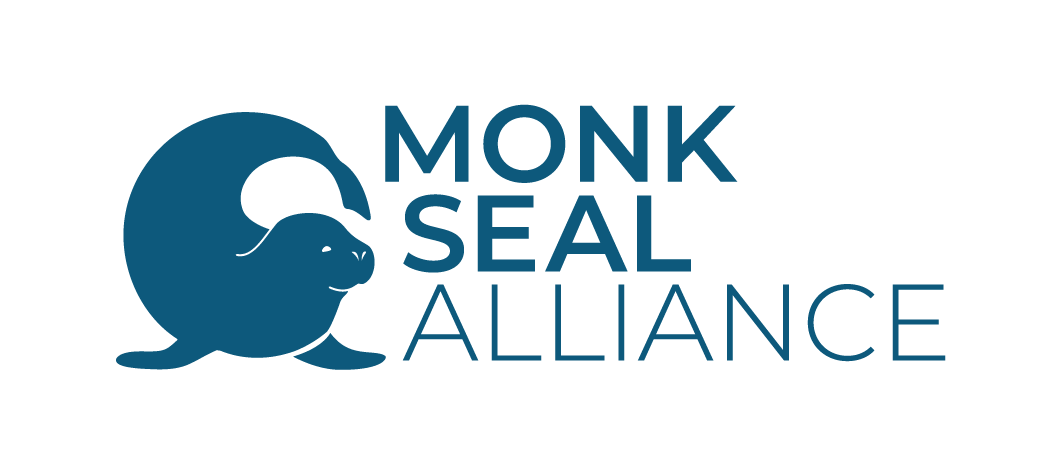The PROJECT
Background
The Mediterranean monk seal (Monachus monachus) is one of the most iconic yet endangered marine mammals in the world. Once widespread across the Mediterranean and adjacent seas, centuries of human persecution and habitat loss have reduced its range. Today, it is classified as “Vulnerable” on the IUCN Red List (2023).
Breeding and resting habitats—primarily marine caves—are threatened by tourism development, urbanisation, and other human disturbances. The habitat degradation forces seals to use suboptimal sites, reducing pup survival. Accidental entanglement in fishing gear and deliberate killings further endanger the species. Urgent conservation action is needed: habitats must be located and protected, and local communities informed and engaged.
Greece, with its extensive coastline, still hosts a recovering population thanks to decades of dedicated conservation work. As this population slowly expands, monk seals are now sporadically observed along the coasts of Albania, Montenegro, and Croatia—areas that may soon be recolonized.
Identifying and safeguarding the remaining suitable habitats in these regions is essential for the long-term recovery of the monk seal. Just as important is fostering awareness of the species’ needs and threats. Lasting protection will only be possible through strong cooperation between conservationists, local communities, the tourism sector, and fisheries.
The Project
The project initiative began 2017 with a survey led by the Hellenic Society for the Study and Protection of the Monk Seal (MOm), supported by the EuroNatur Foundation, to assess monk seal presence along the coast of Corfu and adjacent areas in the North Ionian Sea. This region is considered a key source population for the Adriatic and was surveyed to evaluate its conservation status. Results confirmed the potential for monk seals to naturally expand northward.
Building on these findings, the project extended its focus to the Adriatic coasts of Albania, Montenegro, and Croatia in 2018. National NGOs from each of these countries joined the effort, working together to lay the groundwork for the monk seal’s return through joint research, habitat protection, and public engagement.
Since 2024, the project has further expanded to include Italy, bringing the entire Adriatic coastline under one coordinated conservation framework. The inclusion of new NGO partners has strengthened regional collaboration and broadened the scope of conservation actions across borders. Together, we aim to support the natural recolonisation of monk seals and ensure the long-term protection of their habitats in the Adriatic Sea.
Habitat Protection
Protecting suitable habitats is key to ensuring the long-term survival of the Mediterranean monk seal. In this project, we focus on identifying and safeguarding marine caves used by seals for resting and breeding. Each identified site is evaluated for its conservation status and potential threats. Based on these findings, we develop tailored recommendations for protective measures.
In parallel, we advocate for the creation and strengthening of marine protected areas (MPAs) and special protected zones. We also assess existing management plans and advise on improvements where needed.
To understand and reduce human disturbance, caves are monitored using camera traps. This allows us to track threats. We also engage with tourism operators and the public to raise awareness about the impact of human activities, helping to reduce disturbances and foster support for seal conservation.
Educating and Informing
Informing and involving local communities is essential for the success of monk seal conservation. The project places a strong focus on outreach. We are organising information events, educational activities, and having direct engagement with key stakeholders such as fishermen, tourism operators, scuba divers, and coastal residents.
By raising awareness about monk seals, their habitats, the threats they face, and the measures needed to protect them, we aim to build a shared sense of responsibility. Expanding active networks and encouraging collaboration across sectors strengthens support on the ground and helps create a safer future for the species in the Adriatic.
Monitoring Monk Seals
Consistent monitoring is central to the project. Camera traps in marine caves are the preferred method to track monk seal presence and behavior. To ensure data comparability, unified guidelines are applied across all project areas.
In addition, we are building national Rescue and Information Networks (RINTs) to support public engagement. These networks aim to raise awareness about monk seals and allow citizens to report sightings or strandings. Everyone is welcome to participate – whether they live by the sea, work in fisheries, or simply care about marine wildlife.
Capacity Building
The first step to protect the remaining suitable marine caves for resting and pupping (EU priority habitat type 8330) is to find out where theses crucial habitats are located. To do so, the coastlines are monitored via remote sensing technology and on-site assessments. Next step is the evaluation of the conservation status and potential threats of the suitable caves. Based on these assessments, a list of recommendations for protection measures of the critical habitat will be created.






